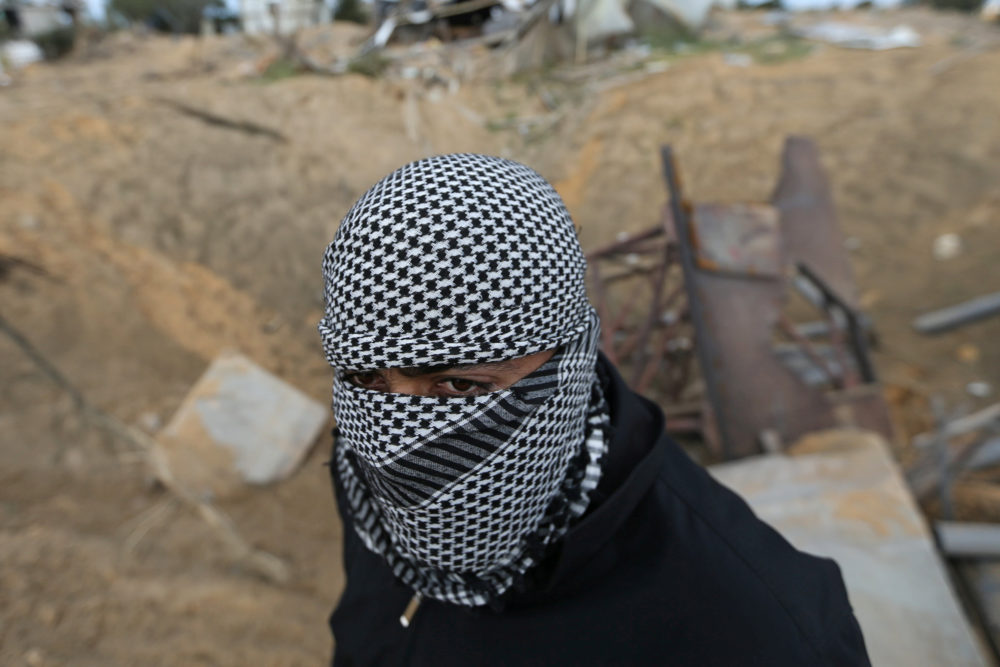Following the recent rocket fire, Israel cannot tolerate “the rules of the game” that the Palestinian Islamic Jihad (PIJ) is trying to impose on it, and the goal of reaching a long-term “understanding” with the main terrorist group, Hamas, He looks more and more distant.For months, the Israeli government has pursued the goal of trying to stabilize the Gaza Strip. He attempted to reach new truce understandings with Hamas through indirect negotiations, brokered by the Egyptians and others, and thus avoid a new war. But the latest incidents show that the goal of stabilizing Gaza is increasingly distant.On Sunday, February 23, the Palestinian Islamic Jihad (PIJ) attempted to carry out a bomb attack on the border, which was successfully thwarted by IDF troops, who shot dead the terrorist while planting the bomb. Outrage spread across Gaza when video emerged of an IDF bulldozer removing the assailant’s body from the scene. Some 30 rockets were fired at Israel that day, half of which were intercepted by Iron Dome and the rest hit open fields.The next day the IDF launched a series of airstrikes against the YIP after the terrorist group fired at least 14 rockets into Israel. The border bombing and rocket fire are just the latest signs of how unsustainable the situation with Gaza is becoming.There are a few reasons for this. The first is the fact that Hamas, the ruling regime in Gaza and its largest terrorist army, is unable or unwilling to restrict the PIJ, the second largest armed faction.Over the past year, Hamas has tried to avoid war. Hamas leader Yahya Sinwar, according to a person familiar with the matter, has prioritized the goal of improving the economic and humanitarian situation of Gazans. Sinwar has done this, not because Hamas has abandoned its long-term radical ideology of destroying Israel or its efforts to establish waves of terrorist attacks from the West Bank, but because he concluded that a war at this time would threaten his own regime. He also concluded that continued economic deterioration among Gazans would pose great risks to Hamas’s control over the Strip.So Sinwar turned to temporal pragmatism. He remains interested in the option of reaching agreements with Israel and hopes that such steps will improve Gaza’s economy, leading to developments such as building new factories to create jobs, allowing more Gaza merchants to enter Israel, and finding solutions to the dire need for energy and water in Gaza.There is no doubt that Sinwar is strong in the Strip, as are members of the Hamas military group around him. However, Hamas’ leadership still lacks the power to force the PIJ to align with efforts to reach a truce.JIP wants to destroy the chances of achieving a ceasefire and Hamas cannot stop it. This is because doing so would undermine the spirit of Hamas as an Islamist jihadist movement and call into question its ideological commitment to conflict with Israel.Israel has been trying to isolate the PIJ and keep Hamas out of the fight. That is why it carried out an ultra-precise missile attack when it assassinated YIP commander Baha Abu-al Ata on November 14, 2019, after he ignored multiple Israeli warnings to cease and desist rocket attacks, anti-tank missiles and bomb attacks he was conducting against Israelis.The missile killed al-Ata and his wife, but did not kill his children, who were in another room in an apartment building in Gaza. Hamas stayed away in the two days of fighting that followed, just as Israel intended.Israel’s hope was that after that operation conditions would emerge that would allow Israel and Hamas to reach longer-term understandings. But new developments followed. The assassination of Iranian Quds Force commander Qassem Soleimani caused YIP to increase its attacks from Gaza in solidarity.Then, in late January, the Trump administration unveiled its Middle East peace plan, and Hamas felt it had to do something in response to signal its rejection. All of these factors diminished the chances of a long-term truce between Israel and Hamas.Last week, a YIP sniper cell attacked IDF troops, who returned fire. YIP has returned to its old patterns by trying to cause instability every day.Israel’s options go from bad to worseHamas has yet to decide on its identity. Is it a civil political regime? A terrorist faction? A military force? A national movement? Or a radical fundamentalist ideology? Hamas is still trying to say “yes” to all of the above; this simply adds to the instability of Gaza.Hamas has not convinced Israel that it is even capable of maintaining a truce, or that it will not use goods entering Gaza to increase its military strength and threaten the Israelis. It cannot provide guarantees that rockets will stop terrorizing Israeli civilians, or that balloons with grenades attached to them will stop appearing over towns and villages in southern Israel. Visibly, it has not slowed down its attempts to orchestrate deadly terrorist squads in the West Bank.If Hamas wants international money to be poured into Gaza’s critical economy, it will need to create significant periods of calm and tranquility, something the terrorist group has consistently failed to achieve.Israel has shown great patience and caution in its dealings with Gaza, based on the understanding that its options are going from bad to worse.Commendably, Prime Minister Benjamin Netanyahu has not rushed to war as a first solution. But the IDF, however, has been preparing for this one. If any of the future rounds of escalations lead to war, the IDF knows that this time it will have to achieve decisive results.That means attacking enemy positions wherever they are, and all of these positions are deeply embedded in Gaza’s civilian neighborhoods. If the IDF detects an enemy headquarters operating on the fourth floor of an apartment building, it can use its precise firepower to hit the floor without bringing down the entire building.The potential path to broader escalation shortens over time. Rounds of fighting can create periods of two or three “battle days” that will then return to calm or escalate into a broader conflict.Hamas and PIJ have manufactured rockets with heavier warheads and longer ranges than in the past. But the IDF has completed a long and qualitative process of preparation and improvement. They have created new combat networks that unite the ground forces, the air force and the intelligence directorate. Field commanders now have access to intelligence, drones and other capabilities as they advance across the urban battlefield, capabilities that did not exist five years ago. The military’s “target bank” is constantly updated.Israel cannot sit on the sidelines indefinitely and watch the residents of Sderot, who only have 15 seconds to find shelter and live lives of terror. He cannot accept that Ashkelon is regularly attacked by rockets and by terrorist squads firing from schoolyards. If war comes, the IDF will have to attack the enemy wherever they are.The broader problem is that while a war may boost Israeli deterrence, it will not fix the economic or humanitarian conditions that have created years of Hamas rule. In fact, after a future war those problems will only get worse.Israel’s security interest is to increase the quality of life of Gazans, a fact highlighted by the Israeli defense system. It is an Israeli interest to reduce the 40% unemployment rate in Gaza, which reaches 65% between the ages of 20 and 30. These figures are a flashing red light showing that Gaza is on the edge of the cliff.Every day more than 400 trucks transport goods from Israel to Gaza.When Gaza experiences power outages, electricity is cut to wastewater treatment plants, and Gaza’s wastewater washes onto Israel’s southern coast. This is a small illustration of how impossible it is for Israel to completely “disconnect” from the events in the Strip. While hospitals in Gaza now have electricity 24 hours a day, other problems continue to grow.An increase in Gaza’s unemployment ratePalestinian Authority (PA) leader Mahmoud Abbas has also done real damage to Gaza’s economic situation by cutting budgets to punish Hamas, his bitter rivals. The PA’s budget cuts have led to a rise in the Strip’s unemployment figures.Last year Israel dramatically increased the number of traders crossing out of Gaza at the Erez border crossing: 355.500 such crossings occurred in 2019 versus 106.400 in 2018. Gaza’s exports of agricultural products, textiles and furniture have increased , but these measures are minimal in the grand scheme of things and amount to a band-aid on an open wound.Israel wants to see more salaries paid in Gaza because it knows that can contribute to calm. But a terrorist attack [in Israel] launched by a Gazan who received an entry permit to Israel can ruin all those efforts.While Israel recognizes the need to improve the quality of life of Gazans, who live under the rule of terrorist factions that use them as human shields, it cannot give in to terrorists or allow armed attacks on Israeli communities to go unanswered. answer. Failure to adequately respond to terrorist aggression would not only damage Israel’s deterrence power in its ruthless neighborhood, where other enemies are closely watching, but would also have adverse effects on the international community at large.Meanwhile, Gaza’s complex problem continues to worsen.Source: BESA – Begin-Sadat Center for Strategic StudiesPost navigation
Subscribe to Updates
Get the latest creative news from FooBar about art, design and business.


